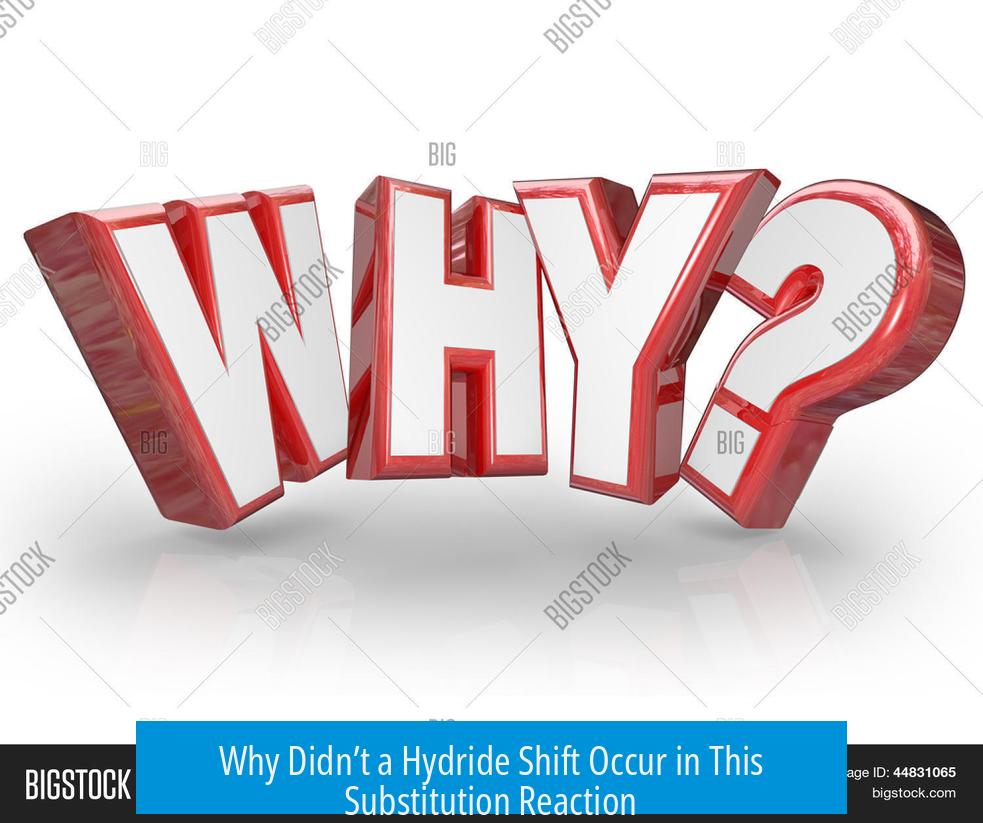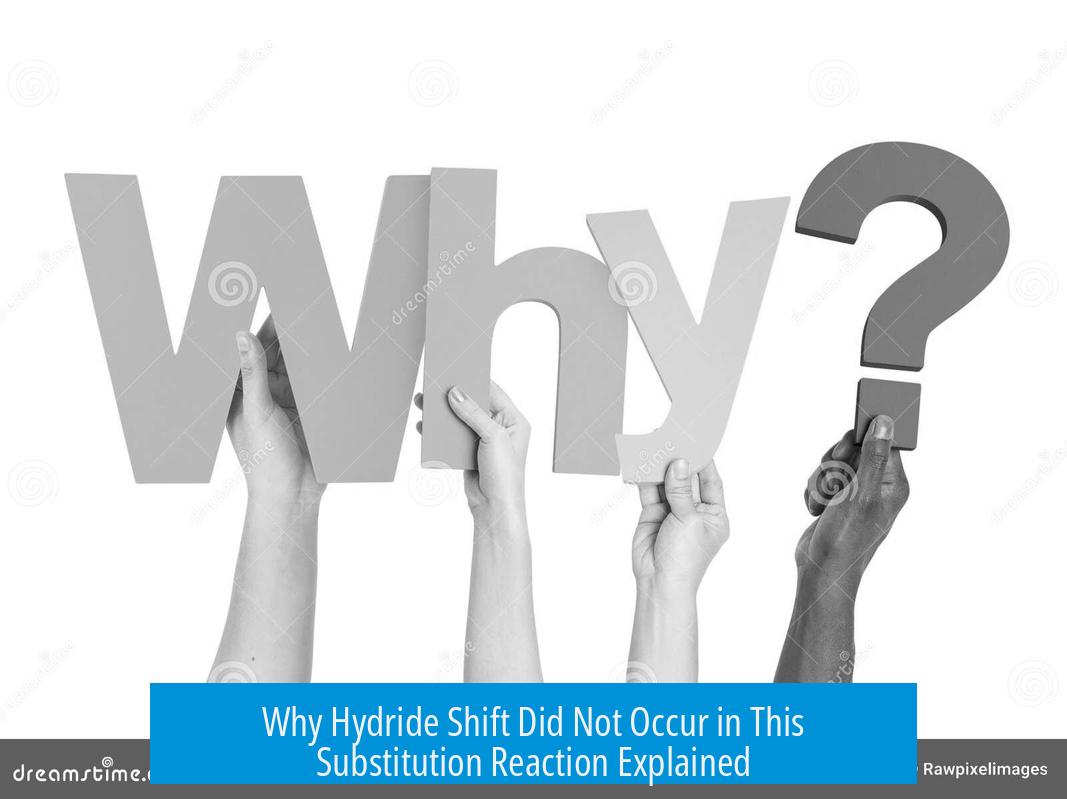Why Didn’t a Hydride Shift Occur in This Substitution Reaction?

A hydride shift did not occur in this substitution reaction because the mechanism proceeds via SN2, which is a concerted process that does not involve carbocation intermediates or rearrangements. Hydride shifts require a carbocation intermediate, which only forms in SN1 or E1 reactions. The presence of a strong nucleophile and a primary substrate ensures that the reaction follows the SN2 pathway instead, precluding hydride shifts.
SN2 Mechanism and Carbocation Absence
The key aspect is that SN2 reactions occur in a single concerted step. This means the nucleophile attacks the electrophilic carbon at the same time the leaving group departs. Because the pathway does not involve a carbocation intermediate at any stage, hydride shifts cannot take place. These shifts require the formation of a carbocation, which rearranges to form a more stable carbocation by moving a hydride ion. Since no carbocation forms, no rearrangement is possible.
Role of Strong Nucleophile and Primary Substrate
- The nucleophile ethoxide ion (EtO−) is strong.
- The substrate is a primary alkyl halide, which is less prone to carbocation formation.
- Together, these factors favor SN2 over SN1 since primary carbocations are highly unstable.
- The strong nucleophile reacts rapidly, leaving no time for carbocation formation.
Hydride Shifts Are Exclusive to Carbocation Intermediates
Hydride shifts occur only when a carbocation intermediate forms and can rearrange to a more stable carbocation.
In SN1 and E1 mechanisms, the carbocation may undergo such rearrangements to minimize energy. Since the current reaction does not form a carbocation, no hydride shift is needed or possible.
Concerted Reaction Precludes Rearrangements

Since SN2 occurs through a backside attack displacing the leaving group in one step, the nucleophile directly substitutes the leaving group without intermediate species.
This concerted mechanism excludes rearrangements such as hydride shifts.
Additional Considerations
- The substrate’s primary nature and strong nucleophile dominate the mechanism choice.
- While branching or steric effects can influence the reaction path, in this case, the SN2 pathway and absence of carbocation prevent hydride shifts.
Key Takeaways
- Hydride shifts require carbocation intermediates, which form only in SN1/E1 mechanisms.
- SN2 reactions proceed concertedly, forming no carbocation, so no hydride shifts occur.
- Strong nucleophiles and primary substrates favor SN2 and prevent carbocation formation.
- No intermediate rearrangement occurs; substitution happens directly at the electrophilic center.





Leave a Comment